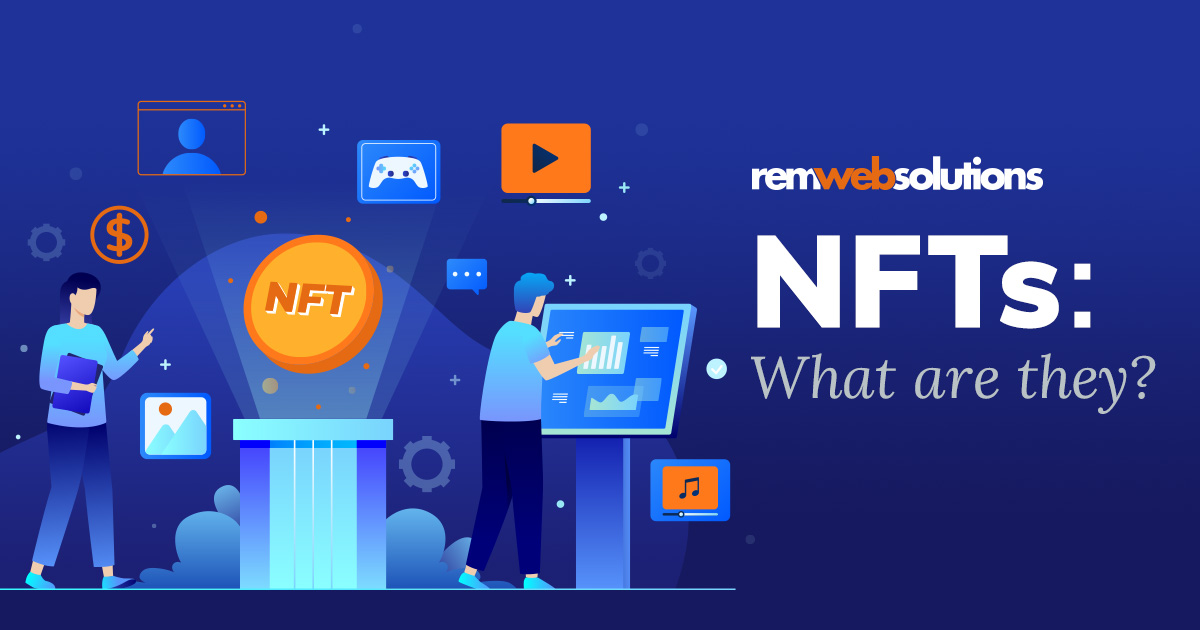
Have you heard about the hype on NFT’s? Well to be honest, I surely missed the memo on this new form of blockchain-based trading. Did what I just say make any sense? Probably not. I’m still doing my best to figure this one out and it seems like I’m not the only one on the struggle bus. So let me try to decipher what I learned.
NFT stands for Non-Fungible Token.
Fungible vs. Non-Fungible
I think the first thing we should attempt to understand is the difference between something that is fungible and something that is not.
Fungible
According to Investopedia, “Fungibility is the ability of a good or asset to be interchanged with other individual goods or assets of the same type. Fungible assets simplify the exchange and trade processes, as fungibility implies equal value between the assets.”
Examples of physical assets that are fungible would be the dollar, gold and casino chips. If you exchange any of these for something else, the value remains the same. If I have $500 in casino chips, I have $500 in cash. Instances of digital fungible assets would be Bitcoin and frequent flyer points.
Non-Fungible
A non-fungible asset is something that can’t be substituted and the value is not interchangeable. Examples of physical non-fungible assets are houses and paintings. Instances of non-fungible digital assets are video game skins and copyrights.
Token
Now that we somewhat have a grasp on the difference between fungible and non-fungible, let us try to understand the concept of these “tokens.” A token is a digitalized certificate that is secured by a blockchain database. As defined on Investopedia, “…crypto tokens are cryptocurrency tokens. Cryptocurrencies or virtual currencies are denominated into these tokens, which reside on their own blockchains. Blockchains are special databases that store information in blocks that are then chained or linked together. This means that crypto tokens, which are also called crypto assets, represent a certain unit of value.”
Non-Fungible Token
I think I’m making some progress here, so let’s tackle the definition of a non-fungible token provided by Investopedia once again. “Non-fungible tokens or NFTs are cryptographic assets on blockchain with unique identification codes and metadata that distinguish them from each other. Unlike cryptocurrencies, they cannot be traded or exchanged at equivalency. This differs from fungible tokens like cryptocurrencies, which are identical to each other and, therefore, can be used as a medium for commercial transactions.”
That is a lot of words that now make some sort of sense to me, and I will do my best to give you an analogy that hopefully gives you a bit more clarity. When I read through this definition the first thing that comes to mind is sports cards, whether baseball, basketball, etc. Each card holds a specific value and that value is determined by the owner and purchaser. Majority of the time, there is not a dollar value attached when individuals are trading sports cards. This example would be considered a physical non-fungible token.
The Digital Hype
Now this is where I sometimes get lost, when discussing digital NFT’s—which can be pretty much anything, such as music, drawings, GIFs, etc.—I’m going to use digital art to illustrate such as a digital artist creates an image and sells it as an NFT; they are selling the original file. Yes, you can right click and download copied versions of it, BUT it is not the original. Think of it this way, Leonardo da Vinci’s Mona Lisa: you can go to the market this weekend a purchase a copy of it for $10, right? However, where is the original masterpiece and how much is it worth? Right now, this piece of art is hanging in the highly secured Louvre Museum and is apparently valued at somewhere around $700 million USD.
In 2021 the digital artist Beeple created and sold the most expensive NFT artwork. The name of the piece is “Everdays: the First 5000 Days.” It was auctioned at Christie’s starting at $100 and eventually sold for $69.3 million. This non-fungible digital token’s worth in 2021 is astonishing, however the trend is continuing and becoming a fantastic way for digital artists to make money.
If you’re anything like me, you’re probably still scratching your head in disbelief and you’re not quite sure how to make of this information. I believe as cryptocurrency evolves things will become clearer. I am currently in the process of purchasing my first NFT and will share my thoughts in a later post!
